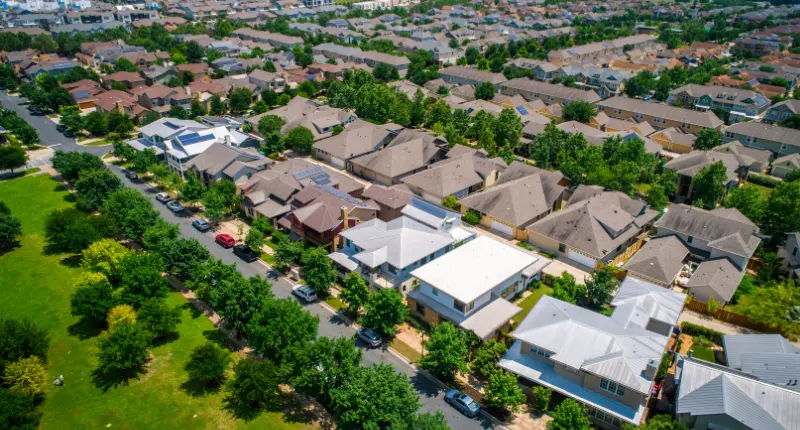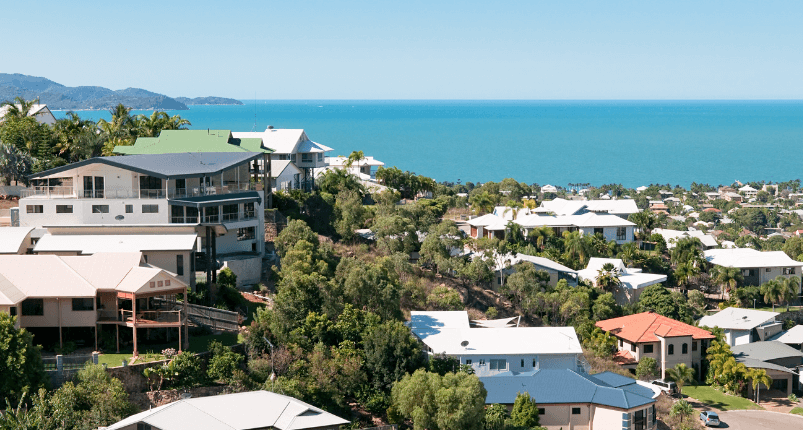
- Financially-stressed tenants and homebuyers equates to over 50% of households
- Household debt equals to 185% of GDP - up from 70% in 1990
- Reiterates calls for more social and affordable housing
Outer suburban communities are witnessing a greater level of ‘mortgage stress’ – defined as having more than 30% of a household’s income spent on servicing a mortgage – according to a Digital Finance Analytics survey.
The concerning data shows between 50% and 70% of renters and mortgagees in key outer suburbs are in trouble.
The survey identified 12 mainly outer suburban areas of Sydney and Melbourne where the number of financially stressed tenants and homebuyers equates to more than half of all households.
Top ten suburbs with mortgage stress
| Electorate | State | Locality type | Seat status | Households in stress % |
| Macarthur | NSW | Outer Metropolitan | Safe Labor | 68 |
| Chifley | NSW | Outer Metropolitan | Safe Labor | 63.9 |
| Werriwa | NSW | Outer Metropolitan | Marginal | 61.4 |
| Greenway | NSW | Outer Metropolitan | Marginal | 58.2 |
| La Trobe | VIC | Outer Metropolitan | Marginal | 57.9 |
| Hume | NSW | Provincial | Safe Liberal/National | 57.3 |
| Fowler | NSW | Outer Metropolitan | Safe Labor | 54.6 |
| Pearce | WA | Outer Metropolitan | Safe Liberal/National | 54.6 |
| Sydney | NSW | Inner Metropolitan | Safe Labor | 54.3 |
| McEwen | VIC | Rural | Marginal | 53.3 |
| Scullin | VIC | Outer Metropolitan | Safe Labor | 52.1 |
| Calwell | VIC | Outer Metropolitan | Safe Labor | 51.6 |
Given there will be a federal election sometime in the next seven months or so, it should be noted that four of these are in marginal electorates.
The sample of 52,000 households shows that the overall proportion of mortgage holders struggling rose from 32.9% in February 2020 to 41.7% in July 2021.
The analysis coincides with a new report from UNSW’s City Futures Research Centre which has called for the housing system across Australia to be “stabilised”.
“With house prices and mortgage borrowing once again surging in 2021, Australia’s household debt is now at a record national high,” said report lead author Professor Duncan Maclennan.
“It’s especially concerning that all Australia’s major banks have internationally high residential mortgage exposure.
“That means Australian households and the overall financial system have become highly exposed to interest rate change rates and external economic shocks.”
Professor Duncan Maclennan, report lead author
The report also found that while Australian household debt was 70% of GDP in 1990, this has since risen to 185% as of 2020.
Three-quarters of this debt is in mortgages with 60% held by Australian banks as residential mortgages. This is one of the highest globally, and exposes the banking system to potential disruption, the report warns.
“One of the biggest concerns we have is that the housing crisis always seems to be someone else’s problem. The Commonwealth Government sees it as something the market will fix, APRA has minimal interest and the RBA states that it is outside its remit,” added report co-author Professor Chris Leishman of the University of South Australia.
“Meanwhile, Australian banks and households are gambling everything on the hope of continuously increasing prices.”
The authors of the report argue that by re-balancing the market, it would be less volatile and reliant upon “macro-prudential lending” interventions.
They advocate for the Reserve Bank (RBA) to play a greater role in maintaining housing stability. By contrast, the central bank regular has reiterated its view not to control house prices.
This report comes as Treasurer Josh Frydenberg hinted at a review of the RBA governance, given the central bank has failed to meet its wage growth and inflationary target in recent times.
Social and affordable housing needs to expand
Another feature of the report is to improve social and affordable housing – something strongly supported by Kate Colvin, the national spokesperson for the Everybody’s Home campaign, who says this type of housing needs to be expanded urgently.
“Whether for owners or renters, Australian housing has seen tearaway growth in prices. At the same time, large swathes of the community have seen their livelihoods and income security collapse. Social and affordable housing is the missing piece of this jigsaw,” said Ms Colvin.
“Politicians of all political persuasion must be prepared for housing inequality to emerge as a major federal election issue.”
Professor Maclennan agrees.
“If the housing market takes a hit from future economic instability, a boost to social and affordable rental would soften the downturn for the entire economy,” he added.







